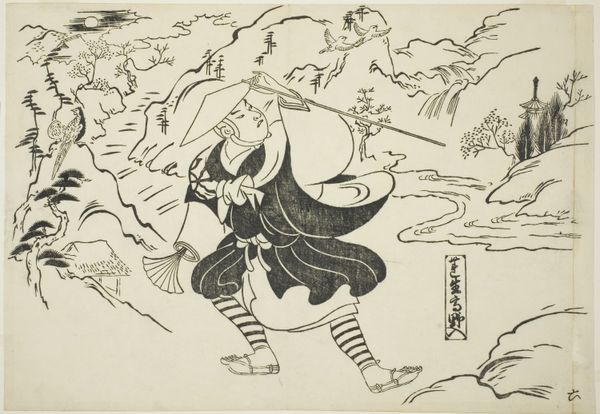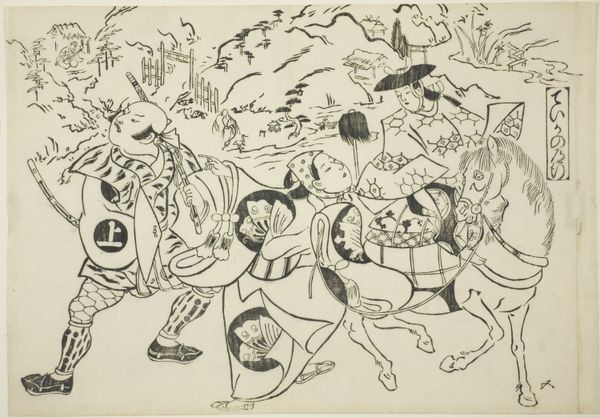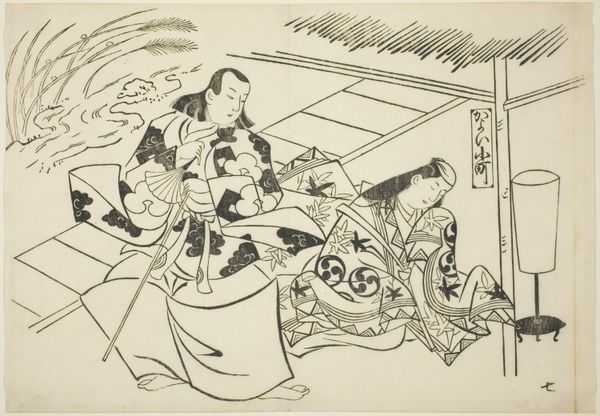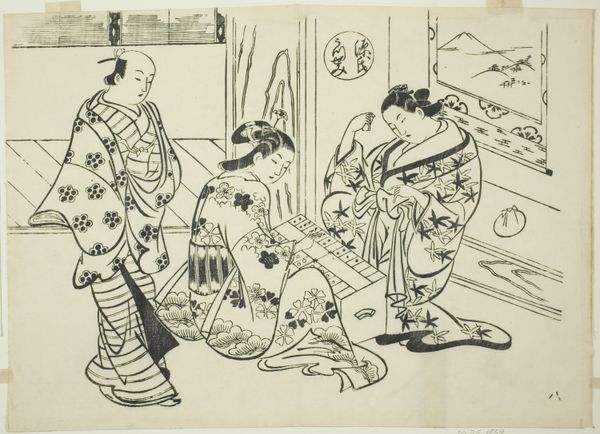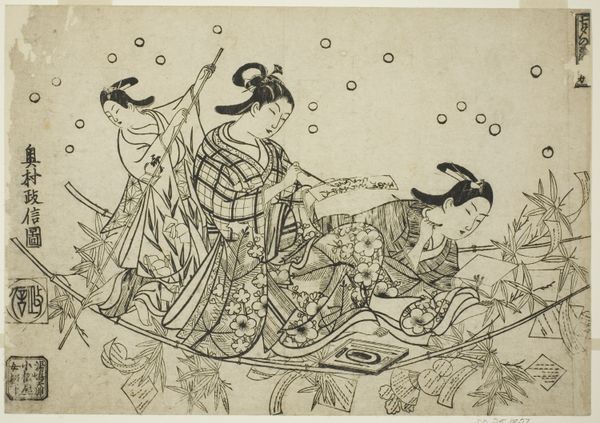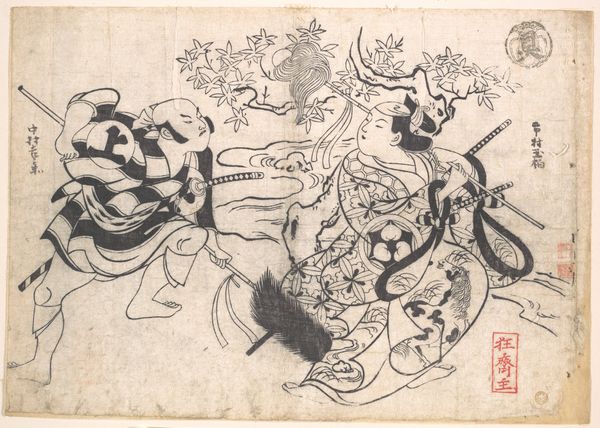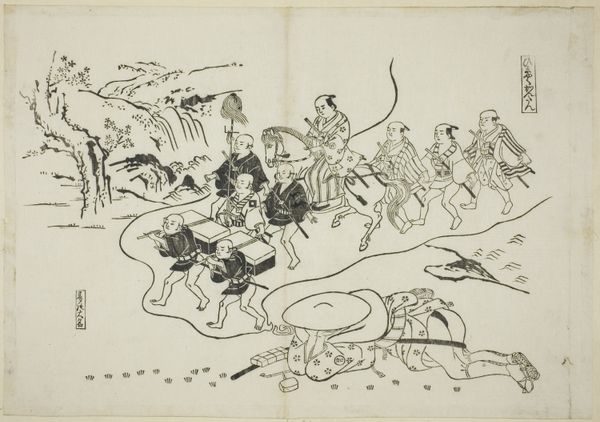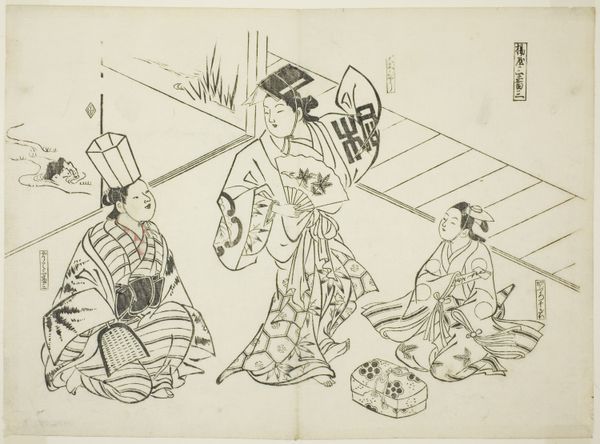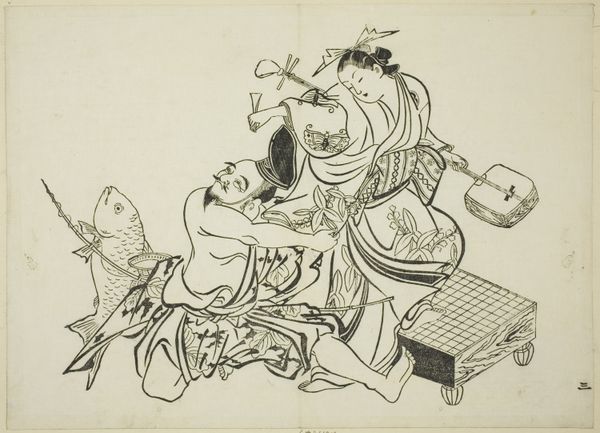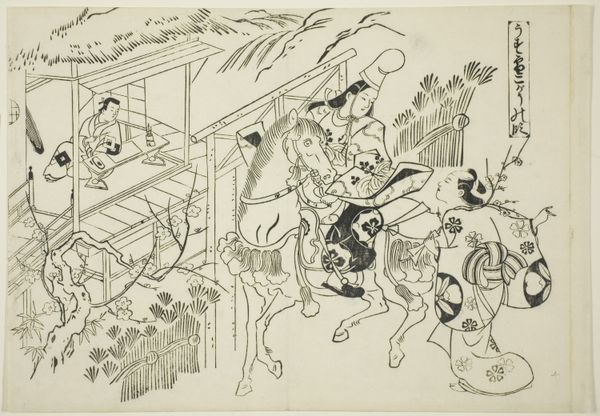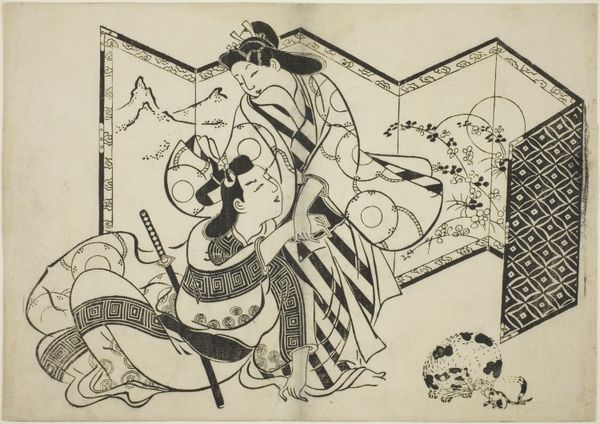
The Servant Choryo (Yakko Choryo), no. 6 from a series of 12 prints depicting parodies of plays c. 1716s - 1726s
0:00
0:00
print, paper, woodblock-print
#
ink drawing
#
narrative-art
# print
#
asian-art
#
ukiyo-e
#
figuration
#
paper
#
woodblock-print
Dimensions: 27.1 × 39.1 cm
Copyright: Public Domain
Okumura Masanobu created this print, "The Servant Choryo" in the 18th century, using woodblock printing techniques. Here, we see Choryo offering his sandal to Kosekiko, an act rooted in humility and respect. This simple object becomes a powerful symbol, echoing across cultures and histories. Consider the motif of the offering. It appears in ancient Roman rituals, where libations were poured to the gods, and in Christian iconography, with offerings of bread and wine during communion. The open hand, presenting something of value, is a primal gesture. It speaks of supplication, gratitude, and the desire for connection. The sandal, often seen as lowly, gains new meaning here. It is a token, charged with the weight of social dynamics. Kosekiko’s acceptance signifies a bond forged in deference, a silent agreement that transcends mere servitude. This echoes in our subconscious, reminding us of the delicate dance of power and submission. The act reverberates through time, evolving, adapting, and resurfacing in myriad forms, each imbued with the collective memory of human interaction.
Comments
No comments
Be the first to comment and join the conversation on the ultimate creative platform.
